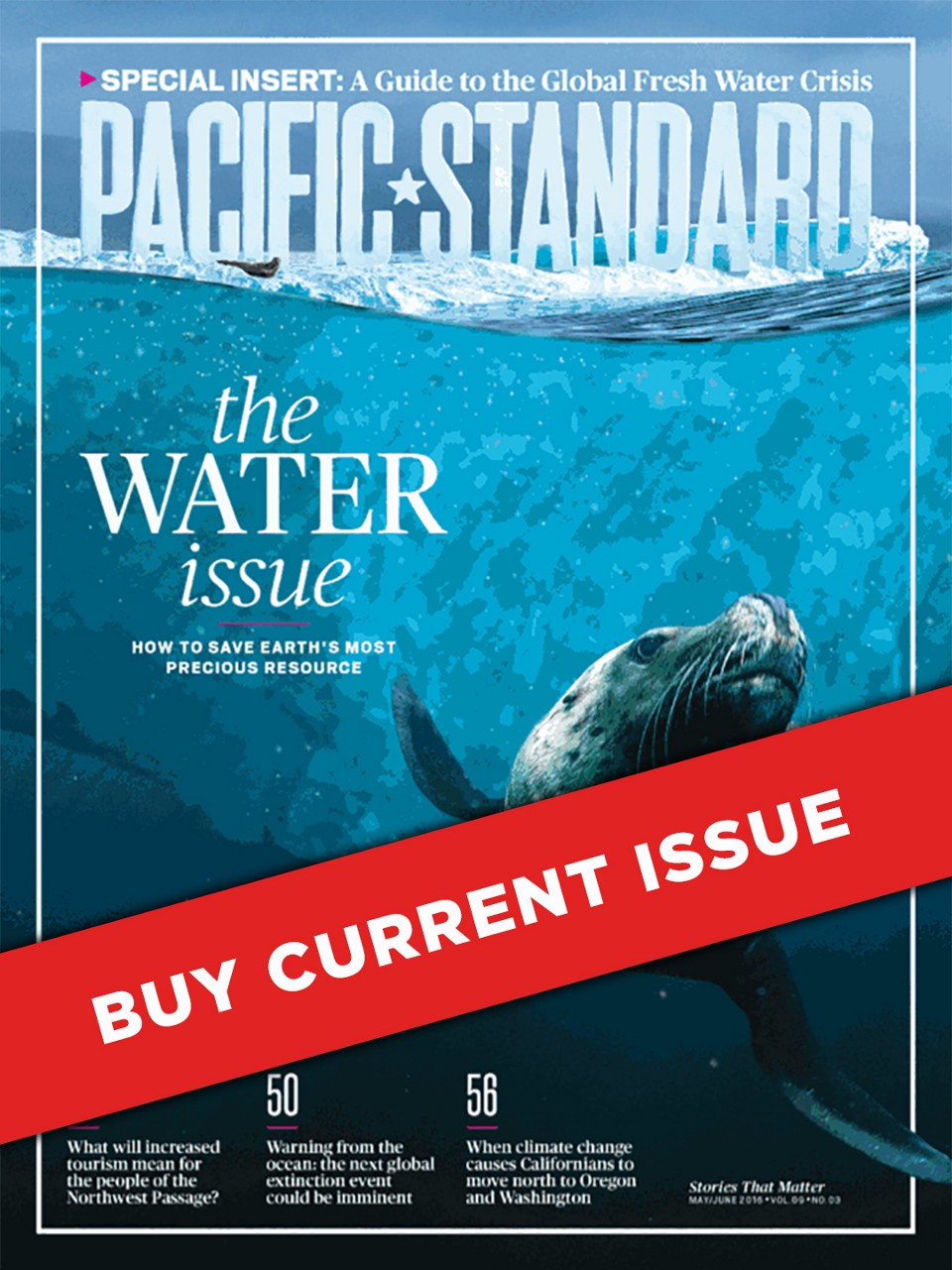Why business and policy solutions will depend on cities—and on women.
By Eliot Metzger & Paul Reig of the World Resources Institute
A woman from the remote Turkana tribe in Northern Kenya carries water from a well. (Photo: Christopher Furlong/Getty Images)
For the past five years, the World Economic Forum has listed water crises among the world’s top global risks, alongside others like “major systemic financial failure” and cyberattacks. Unfortunately, the ranking has proven accurate. The past year alone has seen historic drought conditions in California, devastating floods in India, and water-supply crises in cities including São Paulo, Brazil, and Flint, Michigan.
Now, as attention turns to reducing exposure to water risks, innovators are looking closer at what’s driving our growing, global thirst. While agriculture accounts for 70 percent of the world’s water use, future projections from the Organisation for Economic Co-operation and Development indicate that energy and industrial activities are the fastest-growing sources of future water demands.

Companies and countries should be looking for partners and solutions that address these growing water and energy demands, including efficiency and re-use. These are more cost-effective means of meeting needs compared to investments in supply solutions like desalination and new power plants.
Companies will find themselves asking: Who can we partner with to develop new technologies and business models that will work for our customers
Countries will find themselves asking: How will we support economic development while also ensuring all of our citizens have access to clean water and energy?
Among the more intriguing answers to both of these questions: cities and women.
Why Urbanization and Gender Equity Matter
Cities and women happen to know more about water and energy than anyone.
It takes a tremendous amount of water to cool the power plants that keep a city’s lights on. Thermoelectric power plants account for about half of all water use in the United States. Likewise, it requires a significant amount of energy to heat, treat, and transport water — and even more to convert saltwater into fresh water.

Meanwhile, in emerging economies and rural areas, women are best positioned for — but too often excluded from — informing decisions on water and energy use. They spend 25 percent of each day collecting water and an additional 40 hours each month collecting fuel for their families. In many cases, women who are in charge of household decisions on water and energy have the most direct and important insights on meeting future needs.
Cities as Water Innovation Demonstration Grounds
Consider China’s 15 power-hungry megacities — urban areas with populations of 10 million or more. They are actively looking for win-win solutions that meet energy needs while minimizing water requirements and air-quality impacts. Today, most of these cities are dependent on coal-fired power plants, which can be among the most water-intensive options for electricity. Some 60 percent of existing plants are located in areas of China facing significant or extreme water stress. That suggests China’s massive urban areas will need to invest in low- or no-water cooling technologies for their power plants, while expanding wind and solar power and alternatives to fresh water for cooling thermoelectric power plants (such as brackish water or seawater). Indeed, these shifts are already starting as part of China’s climate and water action plans and other government mandates.
Other smaller but growing Chinese cities are helping companies test and prove new technologies. A partnership effort in Xiangyang, for example, is harvesting untapped energy in wastewater, converting sludge into natural gas that can power buildings and vehicles. Look out for more partnerships between cities and companies with solutions on the demand side of the equation, like energy efficiency and water re-use, in China and around the globe.
Women as Essential Business Partners
It’s increasingly clear that gender equity is a fundamental part of not only water and energy resource planning, but overall economic development. Development agencies, understanding that gender mainstreaming leads to better decision-making, are investing heavily in projects that more actively involve women in energy and water planning. The United Nations Sustainable Development Goals for 2030 include priorities like universal energy and water access, as well as specific targets for mainstreaming women’s roles in such breakthroughs.

This story first appeared in the May/June 2016 issue of Pacific Standard.
Companies, including WRI partners Coca-Cola and Unilever, meanwhile, are participating in initiatives focused on empowering women. They are investing millions in programs that, for example, support entrepreneurship and increase local water access and distribution. Expect women to play critical roles as countries and companies look for ways to balance competing demands for water and energy and ensure access for all.
A New Approach
The world faces a future of extreme water variability. Water risks and supply disruptions are already affecting business in California, China, India, and elsewhere. This is true not just for the electric power and water industries, but for customers and suppliers who rely on them. One study suggests that, over the past four years, Californians paid $2 billion in electricity costs related to drought conditions.
But this is not strictly a supply problem. It is just as much a demand challenge, and innovators should pay attention to opportunities to reduce overreliance on limited fresh water resources. In particular, there is a glaring need to reduce the amount of water needed for energy and the energy needed for water.
Fortunately, necessity is the mother of invention. Those who need and use water and energy the most will be the best partners in finding ways to address demand. Companies and countries alike should find ways to work with cities, women, and others who can help change the way we manage the world’s most important resources.

||





